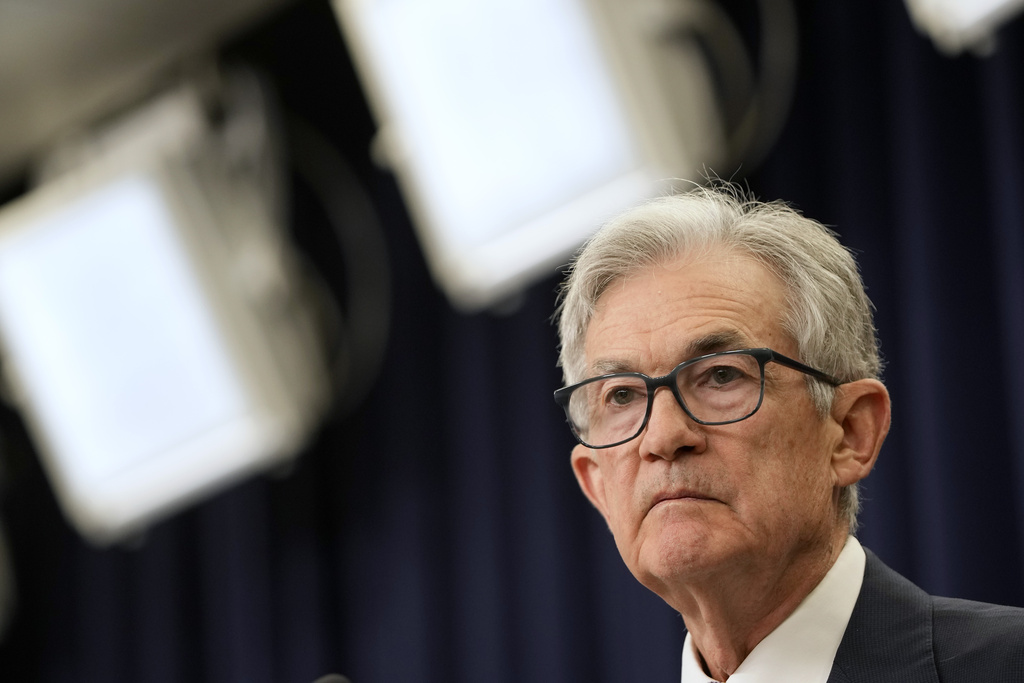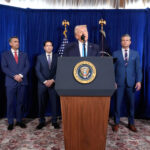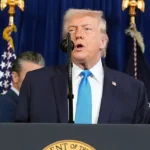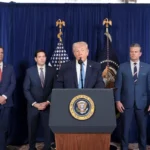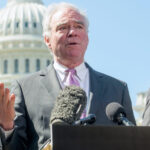Jerome Powell Signals Cautious Approach to Rate Cuts \ Newslooks \ Washington DC \ Mary Sidiqi \ Evening Edition \ Federal Reserve Chair Jerome Powell announced that the Fed would reduce interest rates cautiously due to persistent inflation and a strong economy. While inflation edges closer to the 2% target, it remains above that threshold. Economists anticipate another rate cut in December, but the longer-term outlook remains uncertain as policymakers assess economic conditions and risks of inflation acceleration.
Federal Reserve Rate Cuts: Quick Looks
- Cautious Rate Cuts: The Fed plans gradual rate reductions to manage persistent inflation.
- Strong Economic Signals: A robust economy allows the Federal Reserve to approach rate decisions cautiously.
- Inflation’s Path: Core inflation remains in the high 2% range, posing challenges for the Fed.
- Uncertain Projections: Economists predict a December rate cut, but future reductions are unclear.
- Caution Advised: Officials warn that aggressive cuts could cause inflation to reaccelerate.
Deep Look
“The economy is not sending any signals that we need to be in a hurry to lower rates,” Powell remarked, underscoring that the economy’s resilience allows for a thoughtful and deliberate strategy.
Inflation Nears the Target but Lingers Above
Powell acknowledged that inflation might remain above target in the short term, with the central bank preparing for fluctuations. “Inflation should eventually decline further, albeit on a sometimes bumpy path,” he noted.
Economic Strength Buys Time for Fed Policymakers
A robust economy has granted the Federal Reserve more flexibility to proceed cautiously. Powell stressed that the current strength of the U.S. economy supports the decision to monitor inflation trends over time, rather than rushing into aggressive rate cuts.
“The strength we are currently seeing in the economy gives us the ability to approach our decisions carefully,” Powell said, emphasizing the importance of balancing growth with inflation management.
Forecasts for Rate Cuts in 2023 and Beyond
Broader Economic Context
The Federal Reserve’s benchmark interest rate directly influences borrowing costs for mortgages, credit cards, and auto loans. However, other economic forces—such as inflation expectations and growth projections—also shape long-term interest rates.
Recent political developments have further complicated economic dynamics. For example, yields on Treasury securities have risen since Donald Trump’s presidential election victory. This increase reflects investor expectations of faster economic growth, larger budget deficits, and potentially higher inflation, especially if Trump implements tariffs or other fiscal measures.
Fed Officials Caution Against Over-Cutting
“If we cut too far … inflation could reaccelerate, and the (Fed) could need to reverse direction,” Logan said. She called for a data-driven approach to ensure monetary policy adjustments align with economic realities.
Persistent Challenges Ahead
Core inflation, which excludes volatile categories, has proven stubbornly persistent. The high 2% range it has maintained for several months highlights the challenges the Fed faces in achieving its inflation target without derailing economic growth.
Powell’s remarks on Thursday reiterated the Federal Reserve’s intent to proceed with caution, balancing inflation risks and the need to support economic stability. “We will monitor the data carefully and adjust our policies as needed,” Powell said, signaling a steady but watchful approach in the months ahead.
Key Takeaways
Jerome Powell Signals Jerome Powell Signals

